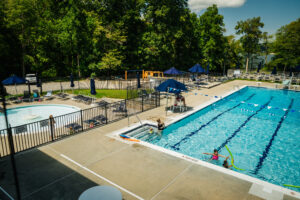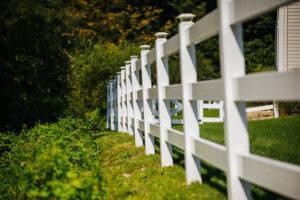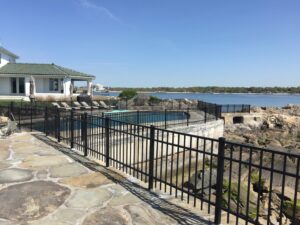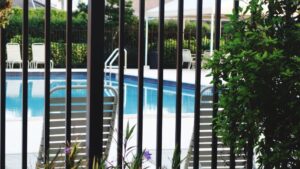Deer are elegant and graceful animals, but their presence can be destructive, especially if they wander into your garden or landscape. Homeowners who invest time and resources into cultivating their outdoor spaces often face a dilemma: how do you keep deer from feasting on your plants without compromising the aesthetics of your property? The answer is simple yet effective—install a deer fence. Deer fencing provides a practical solution to the growing issue of deer encroachment in residential areas. Whether you’re protecting a vegetable garden, ornamental flower beds, or a well-maintained lawn, a high-quality deer fence can make all the difference. This blog explores the various fencing options available, the key features to consider, and additional tips for ensuring your property remains deer-free.
Understanding the Need for Deer Fencing
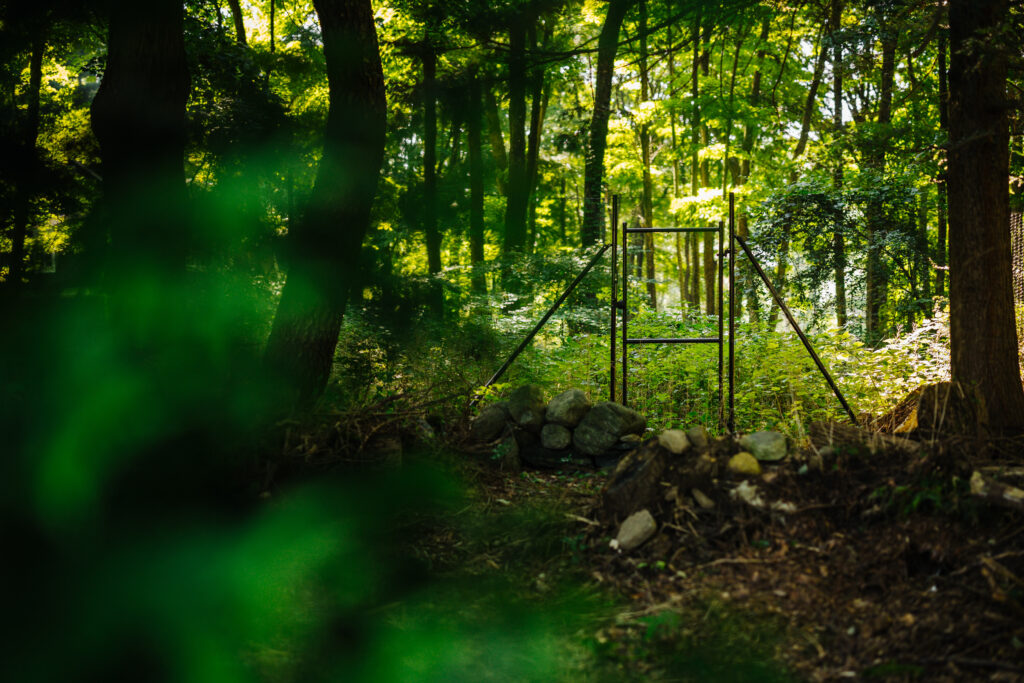
Deer have an impressive appetite for greenery, and once they identify a rich source of food, they’re likely to return repeatedly. This behavior is not just an inconvenience; it can lead to significant financial loss as plants, shrubs, and trees are destroyed. Moreover, deer are not picky—they’ll eat almost anything, especially in the colder months when food is scarce. From delicate blooms to sturdy vegetable crops, nothing is safe from their reach.
Beyond the immediate damage to plants, deer pose other risks as well. They are carriers of ticks that can transmit diseases like Lyme disease, a growing concern in many regions. For those living near wooded areas or in rural environments, the risk is even higher. Fencing serves as a barrier, not just to protect your plants, but also as a health safeguard for your family. With deer populations on the rise in many regions, taking proactive measures has become a necessity rather than a luxury.
Types of Deer Fencing
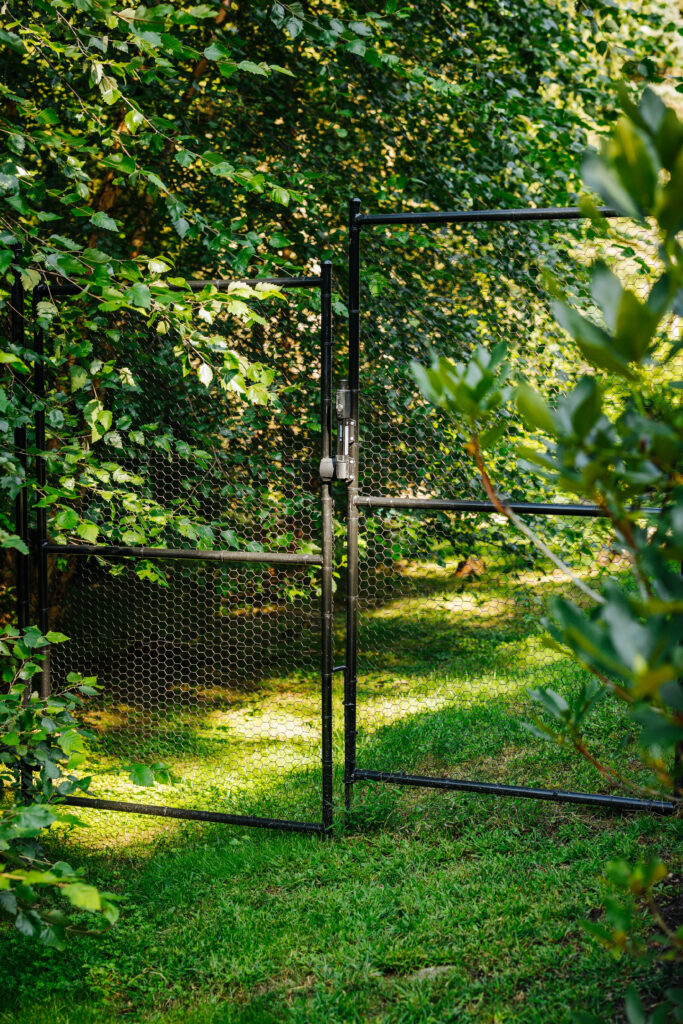
When deciding on deer fencing, it’s important to weigh your options carefully. Different types of fences offer varying levels of protection, aesthetics, and cost-effectiveness. Here’s an in-depth look at some of the most popular choices:
1. Physical Barriers
Physical barriers are the most traditional and straightforward type of deer fencing. They work by creating a physical obstacle that deer cannot bypass.
- Wooden Post Fencing with Mesh: A combination of sturdy wooden posts and plastic-coated hex wire mesh is an increasingly popular choice for homeowners. The mesh is nearly invisible from a distance, maintaining the aesthetic appeal of your garden while providing robust protection. The wooden posts can be treated or stained to match your home’s exterior, making it easier to integrate the fence into your landscape design.
- Wire Mesh Fencing: If you’re working with a large property or need an economical option, wire mesh fencing might be the way to go. These fences are typically made from galvanized steel or coated metal, ensuring long-term durability. They are also highly customizable—you can opt for varying mesh sizes and thicknesses depending on your specific needs. For large estates or agricultural properties, wire mesh fences can be scaled up to cover extensive areas without breaking the bank.
2. Electric Fencing
Electric fences are another option, particularly for those looking for added deterrence. These fences are designed to deliver a mild shock when deer make contact, teaching them to avoid the area. Electric fencing works best when combined with other forms of fencing, especially if deer are particularly persistent in your area. However, electric fences do require regular maintenance and should be installed carefully to ensure both effectiveness and safety. For properties with a high risk of deer intrusion, an electric fence can be a powerful tool in your arsenal.
3. Invisible Fencing and Repellent Systems
While not technically fences, there are non-physical deterrents that can help keep deer away. These include motion-activated sprinklers, ultrasonic sound devices, and scent-based repellents. These solutions are less reliable than physical fences, especially in areas with high deer populations or during seasons when food is scarce. However, they can be effective as supplementary measures. For instance, using a repellent system in tandem with a physical fence can reinforce the barrier, making your garden even less attractive to deer.
Key Features of an Effective Deer Fence

To maximize the effectiveness of your deer fence, several important factors need to be considered:
1. Height and Structure
Deer are known for their ability to jump impressive heights—up to 8 feet in some cases. As a result, your fence should be at least 8 feet tall to prevent deer from leaping over it. In some instances, properties with unique layouts or challenging terrain may require even taller fences or multi-layered barriers. In addition to height, consider the strength of your fence. A flimsy structure is unlikely to withstand determined deer, especially if they can see through to the greenery beyond.
2. Durability and Maintenance
Outdoor fencing is constantly exposed to the elements, from harsh sun to driving rain and heavy snow. Choosing a fence material that can withstand these conditions is crucial. For instance, treated wood posts and galvanized metal mesh are known for their resilience and long lifespan. Regular maintenance, such as checking for wear and tear and ensuring posts are firmly anchored, will extend the life of your fence and keep it effective over time.
3. Aesthetic Considerations
Your deer fence doesn’t have to be an eyesore. Modern fencing options offer a variety of designs that can enhance rather than detract from your property’s appeal. For example, natural wood blends seamlessly with most garden settings, while dark-colored mesh fences are unobtrusive and maintain a low visual profile. Customizing your fence’s design to match your home’s architecture or landscape style allows you to protect your garden without sacrificing aesthetics.
Installation and Cost Considerations
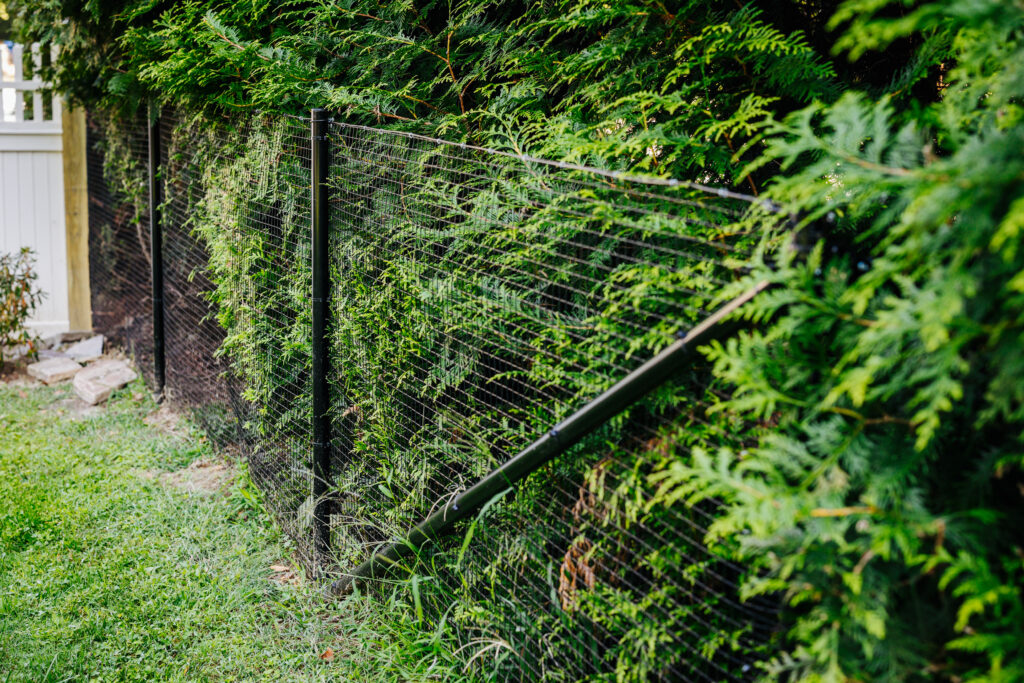
Installing a deer fence is a significant investment, so it’s important to plan carefully. The first major decision is whether to handle the installation yourself or hire professionals. DIY installations can be cost-effective, but they come with challenges, especially for those without prior experience. Improperly installed fences are less effective and may require costly repairs down the line.
On the other hand, professional installation ensures that your fence is built to last. Experts can account for variables like uneven terrain, soil conditions, and local regulations, providing a seamless installation process. Additionally, they can offer advice on choosing the right materials and designs based on your specific needs.
Cost is another crucial consideration. Basic wire mesh fences tend to be more affordable, while high-end wooden fences or custom designs will be more expensive. For large properties, the cost of materials and installation can add up quickly, so it’s important to get multiple quotes and carefully evaluate your options. Keep in mind that while upfront costs may be significant, the long-term benefits of protecting your property can easily outweigh the initial investment.
Additional Tips for Protecting Your Property
In addition to installing a deer fence, there are other steps you can take to minimize the risk of deer damage:
- Plant Deer-Resistant Species: Certain plants are naturally unappealing to deer. Incorporating these into your garden can help reduce the likelihood of deer intrusion. Examples include herbs like rosemary and lavender, as well as ornamental grasses and plants with strong scents or prickly textures.
- Use Motion-Activated Devices: Motion-activated sprinklers, lights, and sound devices can startle deer and deter them from lingering near your property. These tools are particularly effective when placed near high-traffic areas like entryways or along known deer paths.
- Monitor Seasonal Changes: Deer behavior changes with the seasons. In winter, food becomes scarce, and deer are more likely to challenge fences. In spring and summer, growing plants are particularly attractive. Regularly assess your property and adapt your strategy as needed.
- Strategically Manage Large Properties: If your property covers a large area, consider a combination of fencing and natural barriers, like dense shrubs or trees. This creates layers of protection and makes it more difficult for deer to access your garden.
Deer fencing is an investment that pays off in the form of a protected garden, a safer property, and peace of mind. With the right fence in place, you can enjoy your outdoor spaces without constantly worrying about wildlife damage. By carefully selecting the appropriate type of fence, considering key features like height and durability, and supplementing your efforts with additional deterrents, you can create a robust defense against deer. For the best results, consult with a fencing expert to determine the most effective solution for your property and ensure a professional installation

